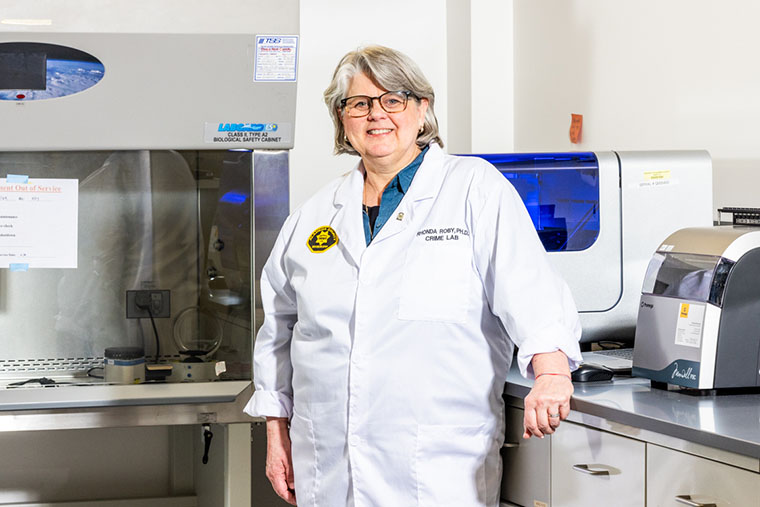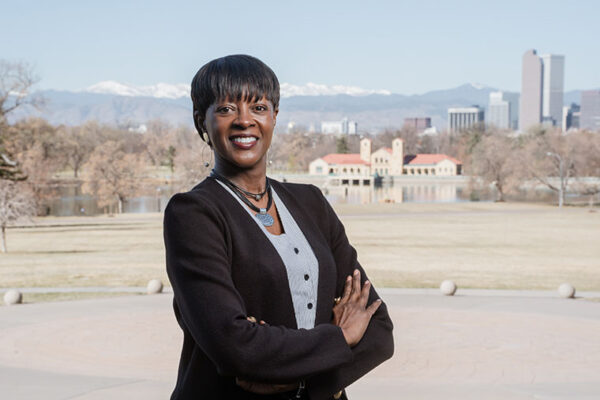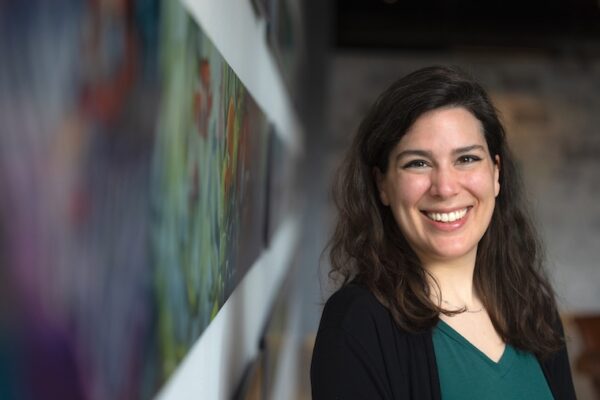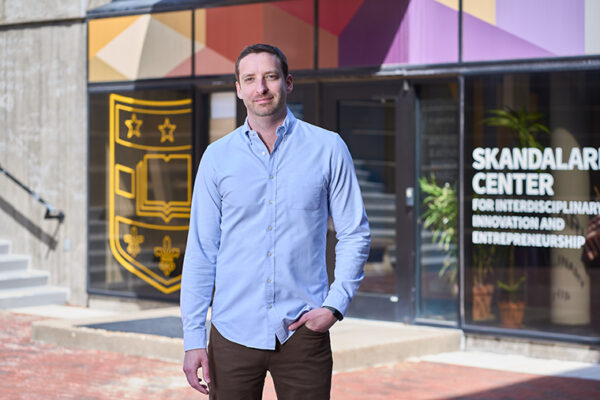Forensic expert Rhonda Roby, AB ’85, has helped identify human remains from the Pinochet coup in Chile and the Branch Davidians standoff in Waco, Texas. She spent four years in a lab helping to identify biological evidence from the victims of the 9/11 attacks. She has processed remains of U.S. soldiers who died in Operation Desert Storm and those remembered on the Vietnam Memorial. She was on the team that verified conclusively the remains of Tsar Nicholas II, the Tsarina and some of the Romanov family members. Her latest project: helping to identify the DNA of Leonardo da Vinci.
And she’s done much of the work using technology that had yet to be invented when she first stepped foot on the Danforth Campus in 1981.
But before she deciphered anything, she was a senior on the Homecoming committee who, in 1984, convinced Harold Ramis, AB ’66, to return to WashU to serve as grand marshal of the parade.
“My parents always taught me there were no limits,” Roby recalls. “So during winter break I was home, lamenting my need for a parade marshal. My dad said, ‘Let’s find Harold Ramis.’ I don’t know how we found phone numbers back then — 4-1-1 or something, right? But we did. I called it, and Ramis answered his phone. I told him WashU wanted him back for homecoming and that we would pay for it.
“He laughed and said, ‘I don’t need you to pay for anything, but I would be happy to come back!’ He was so nice about everything,” she says.
Roby’s pluck in securing a star of one of 1984’s hottest movies, Ghostbusters, may just hold the key to all that came after for one of the country’s foremost experts in forensic DNA testing: unabashed fearlessness, an undaunted spirit and plain old hard work.
A native of Oklahoma, Roby is warm and personable and quick to deflect responsibility for any of her career accomplishments. “I’m not a great scientist,” she says. “But I’m a good forensic scientist who has worked hard and studied hard to get where I am. I’ve had some wonderful mentors. I’ve been lucky, and I’ve capitalized on that.”
Part of that good fortune was her choice to pursue graduate work with George F. Sensabaugh Jr., who, at the time, was doing pioneering work on mitochondrial DNA, the genetic material inherited from one’s mother that is inside every cell in a body.
In the 1980s, Sensabaugh’s lab at the University of California, Berkeley was one of the first to use PCR (polymerase chain reaction) technology for forensic sciences, which could produce multiple copies of a specific DNA strand. The technique would prove revolutionary, and Roby was there at the beginning, first learning how to extract mitochondrial DNA from hair shafts.
Today, there are more than 400 public forensic labs in the country. But as the technology was evolving in the late 1980s, only private companies were doing DNA testing. At the onset of Operation Desert Storm in 1990, Roby was working at one of the only labs set up for PCR technology.
‘It’s never just one person working a case. It takes a large team to make this happen.’
Rhonda Roby
From there evolved some of Roby’s most high-profile cases involving DNA testing, including that day in September 2001 — two days after the attack on the World Trade Center — when she was one of a few forensic scientists flown to the site. It’s a day she’s never forgotten.
Ultimately, Roby would head up a team of 59 that worked 24 hours a day for four years to identify every DNA strand that could be extracted from the biological evidence collected and logged at the site.
Roby’s work is painstaking and tedious, but she loves it. Currently, she serves as supervising DNA criminalist/technical leader for the Alameda County Sheriff’s Office in California. Despite the workload, despite the sobering fact that there will always be a need for crime labs to identify the tiniest pieces of evidence from the most heinous of crimes, Roby, 61, has no plans to slow down.
“We implement rigorous quality control measures to ensure that every detail and every procedure meets our high standards,” she says, “because what we’re doing is potentially putting someone in prison.” And then, she says, there are the victims and their family members. “I’ll tell my team, ‘This is someone’s worst day of their life.’ This is why I pour so many hours into it — more hours than I should.”
And she emphasizes that she doesn’t do anything alone. “On any case I’ve been part of, anything I’ve ever done, I’ve always been part of a team,” she says. “Sometimes you take a lead role; sometimes you take a back seat. It’s never just one person working a case. It takes a large team to make this happen.”



